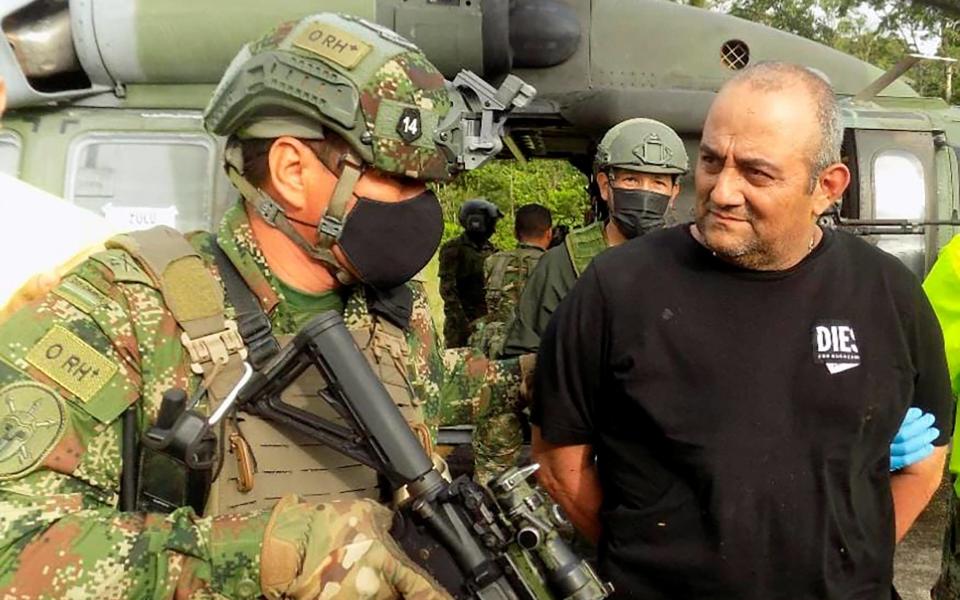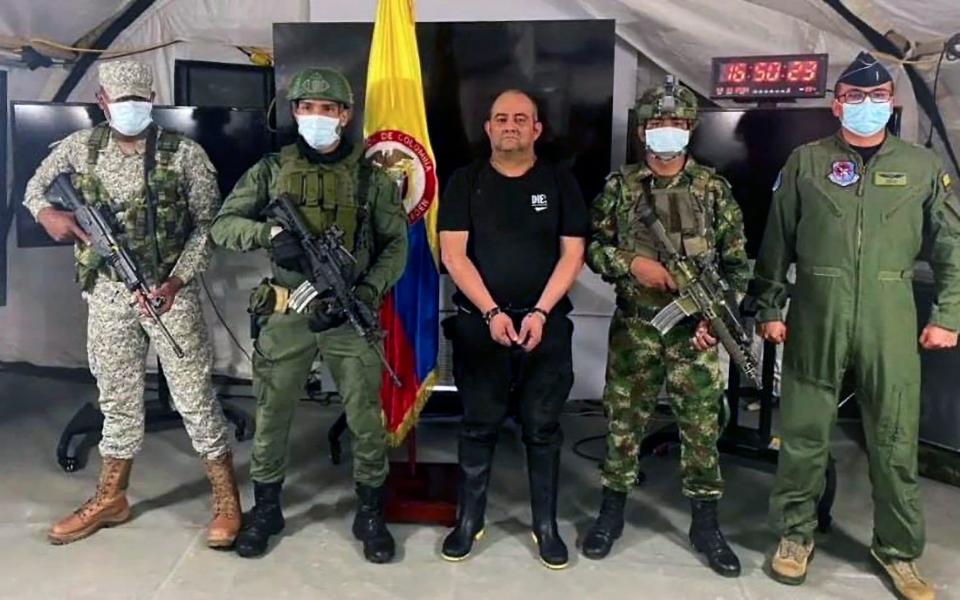Colombia captures most wanted drug lord in 'biggest blow to cocaine trade since fall of Escobar'

Colombia’s most notorious drug lord has been captured after more than a decade on the run, dealing a major blow to the rampant cocaine trade.
Dairo Antonio Úsuga, 50, who was known as “Otoniel” led the country's largest narco-trafficking gang known as the Gulf Clan.
He was captured near one of his main outposts in Necocli, near the border with Panama.
One police officer died during the arrest in an operation which involved 500 soldiers and 22 helicopters.
Colombia’s president, Iván Duque, compared Úsuga’s arrest to that of another feared narcotics kingpin, Pablo Escobar, three decades ago.
"This is the hardest strike to drug trafficking in our country this century," he said.

The operation was “the biggest penetration of the jungle ever seen in the military history of our country,” he added.
Mr Duque had been under pressure to match his tough law-and-order rhetoric with action at a time when cocaine production was soaring.
According to a White House report the amount of land dedicated to the production of coca – cocaine’s raw ingredient – increased by 16 per cent last year, reaching levels unseen for two decades.
Úsuga’s capture brought an end to a career in which he aligned himself to both left and right-wing guerrilla groups.
The drug lord was spotted trying to hide underneath a heap of branches. He surrendered without a struggle.
His hideout, ringed by eight layers of security, was found with help from intelligence provided by the UK and the US.
Úsuga had been on the US Drug Enforcement Administration’s most-wanted fugitives list for more than a decade with a $5 million bounty on his head, having been indicted in a Manhattan federal court in 2009 on drug charges.
Further indictments in Brooklyn and Miami alleged he had imported at least 73 tonnes of cocaine between 2003 and 2014 via Venezuela, Guatemala, Mexico, Panama, and Honduras.
He was found hiding in the jungle where he had tried to avoid detection by using couriers rather than the phone to communicate with members of his cartel.
Colombia's police chief Jorge Vargas told a press conference Úsuga, fearful of capture, slept in the open and avoided inhabited areas.

The Colombian authorities released a picture of a handcuffed Úsuga surrounded by soldiers. His arrival in Bogota, where he was taken into custody under armed guard, was broadcast live on television.
Thanks to his army of assassins, Úsuga and his clan controlled much of northern Colombia and maintained an iron grip on the cocaine smuggling routes through Central America into the US.
He took over the leadership of the clan from his brother Juan de Dios, who was killed by police in 2012.
According to the Colombian government the group, which raised money through drug trafficking, illegal mining and extortion had been responsible for the wave of violence which swept across the country following the peace pact signed with the Marxist FARC guerrillas in 2016.
Úsuga himself had at one point been a member of the Popular Liberation Army (EPL), a Marxist guerrilla group that folded in 1991.
He then crossed the political spectrum, joining far-right paramilitaries, refusing to disarm when the militia signed a peace treaty in 2006.
Instead, he cemented his position in the narcotics underworld, establishing a flourishing operation in the Gulf of Uraba in northern Colombia.
He avoided capture by moving between safe houses at night, using orthopaedic mattresses because of a back injury.
In 2017 Úsuga’s face was seen for the first time after he released a video to coincide with Pope Francis’s visit to the country, in which he offered to join the peace process.

 Yahoo News
Yahoo News 